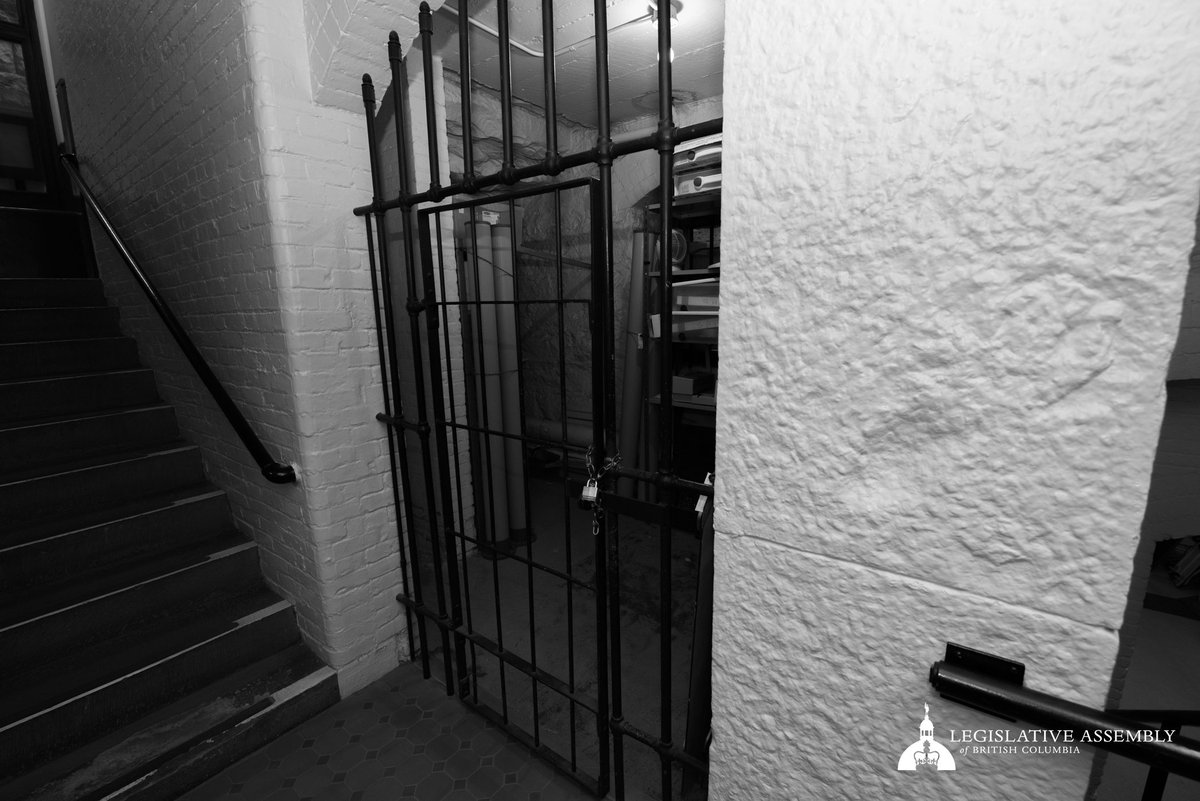One of the many unique locations within the Parliament Buildings is the jail cell in the basement. However, many interested visitors are usually disappointed to learn there has never been anyone held in the jail and that it is now used only to store office supplies.
So, why does the Legislative Assembly have a jail cell anyway? Some think it is because of the Speaker's power to issue warrants for a person's arrest if they refuse to appear before the Legislative Assembly or a parliamentary committee. Although there have been two such cases in British Columbia's history, none of the people involved were confined to the jail cell in the basement.
The first time that a Speaker in British Columbia issued a warrant for a person's arrest occurred prior to the construction of the Parliament Buildings. In 1892, James and Robert Kennedy, owners of a newspaper in New Westminster, refused to appear at the Bar of the House to answer for an editorial which was deemed "libelous" by the Legislative Assembly. The brothers were held overnight in a provincial jail in New Westminster before the Legislative Assembly was prorogued and the matter was dropped.
The second case occurred in 1917 after the secretary-treasurer of the Pacific Great Eastern Railway, Mr. R.D. Thomas, was summoned to the Bar of the House to answer questions concerning electoral campaign contributions. When he refused to answer any questions on the subject, the Legislative Assembly voted to find Mr. Thomas in contempt and he was taken into custody by the Sergeant-at-Arms. During his month as a "prisoner" of the Legislative Assembly, Mr. Thomas slept in a Cabinet ministers' lounge, read in the Legislative Library, took a nightly stroll around the harbour, and ate some of his meals at the Empress Hotel with the Sergeant-at-Arms.
So, the little jail cell in the basement is still waiting for its first guest. In fact, a paper in the Legislative Library by former Provincial Librarian and Archivist, Willard Ireland, argues that the space was never intended to serve as a jail cell. He points to the fact that it was not used to imprison Mr. Thomas in 1917 and that it is not labeled as a jail in Francis M. Rattenbury's original architectural drawings; instead it is marked as a storage room. Jail cell or not, it remains one the most interesting features of the Parliament Buildings.

